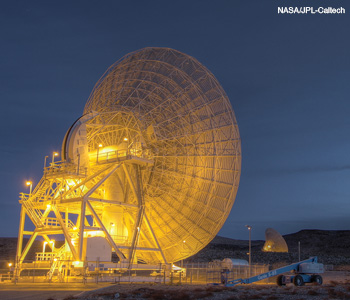Feature
Planetary Radar Imaging and RF-Over-Fiber
Over the past three decades, NASA ground-based radar tracking stations and spaceborne missions have achieved spectacular successes imaging distant planets and Earth’s surface. RF-over-fiber has constituted a crucial component tying the systems together.
 Beam waveguide antennas at the Goldstone Deep Space Communications Complex, located in the Mojave Desert, Calif.
Beam waveguide antennas at the Goldstone Deep Space Communications Complex, located in the Mojave Desert, Calif.
On 22 February 2000, Space Shuttle Endeavour returned to Earth after a successful 11-day flight—the Shuttle Radar Topography Mission (SRTM)—gathering high-resolution topographic radar images of some 80 percent of Earth’s land surface. In addition to the more than 12 terabytes of data that the shuttle brought back that day, it also carried something else: a 60 m long extensible mast equipped with a fiber optic link that formed one of the keys to the mission’s success.
…Log in or become a member to view the full text of this article.
This article may be available for purchase via the search at Optica Publishing Group.
Optica Members get the full text of Optics & Photonics News, plus a variety of other member benefits.
